 中文版
中文版


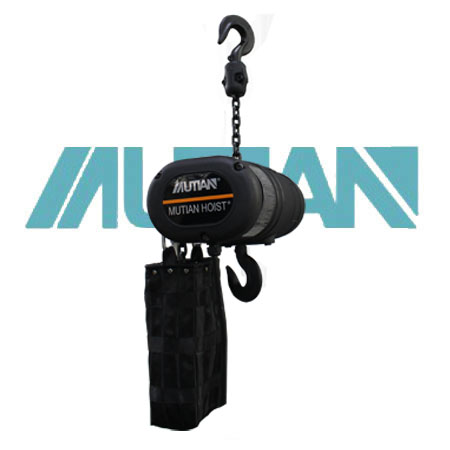
Welcome to contact us by phone:0086-0312-7969888
The internal components of a stage electric crane, also known as a stage electric hoist or electric chain hoist, can vary depending on the specific design and manufacturer. However, I can provide a general overview of the key components commonly found in a stage electric crane:
Electric Motor:
The electric motor is a crucial component responsible for generating the mechanical power required for the operation of the crane. It may be an AC (alternating current) or DC (direct current) motor, depending on the design.
Gearbox:
The gearbox is used to control and adjust the speed and torque of the motor's output. It contains gears and transmission mechanisms to match the motor's power characteristics to the requirements of the crane.
Brake System:
A brake system is employed to ensure that the crane can stop and hold its position securely. Common types of brakes include disc brakes or drum brakes, and they are often engaged when the motor is not actively lifting or lowering a load.
Chain or Wire Rope:
The lifting medium, which can be a chain or wire rope, is used to raise and lower the load. In the case of stage electric cranes, an electric chain hoist is more common. The chain is wound around a drum or sprocket connected to the motor.
Load Chain or Wire Rope Drum:
The load chain is the portion of the chain that extends from the hoist to the load. In a wire rope hoist, the wire rope is wound around a drum. The drum is connected to the motor and rotates to raise or lower the load.
Control Pendant or Remote Control:
The control pendant is the handheld device or remote control used by the operator to control the movements of the crane. It typically includes buttons or switches for lifting, lowering, and maneuvering the load.
Limit Switches:
Limit switches are safety devices that are used to set upper and lower limits for the travel of the load. They prevent overtravel and ensure that the load is lifted or lowered within safe parameters.
Electrical Components and Wiring:
Various electrical components, such as relays, contactors, and wiring, are used to control the electric crane's operation. These components are housed in an electrical enclosure for protection.
Housing or Casing:
The housing or casing encloses and protects the internal components of the electric crane. It also serves as a structural component to support the crane's weight and resist external forces.
Suspension and Mounting:
The crane may include components for suspension or mounting, depending on its configuration. This could include brackets, trolleys, or other mechanisms for attaching the crane to a support structure.
Optional Features:
Depending on the specific model and application, stage electric cranes may include additional features such as thermal protection, emergency stop functions, or load monitoring systems.
It's important to note that the design and features of stage electric cranes can vary between manufacturers and models, so the components listed above may not be exhaustive or applicable to every electric crane. For detailed information, it's recommended to refer to the specific product documentation provided by the manufacturer.
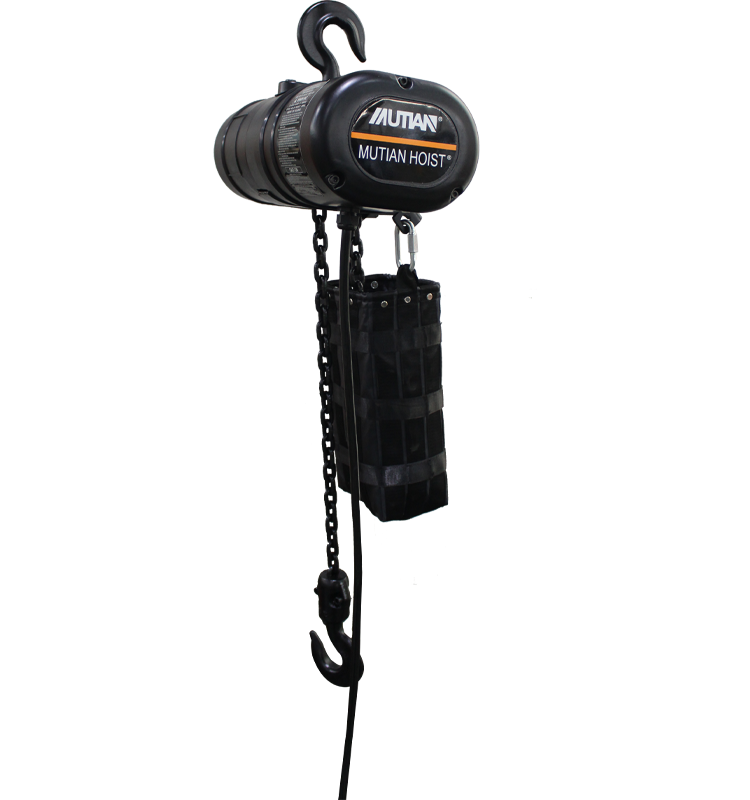
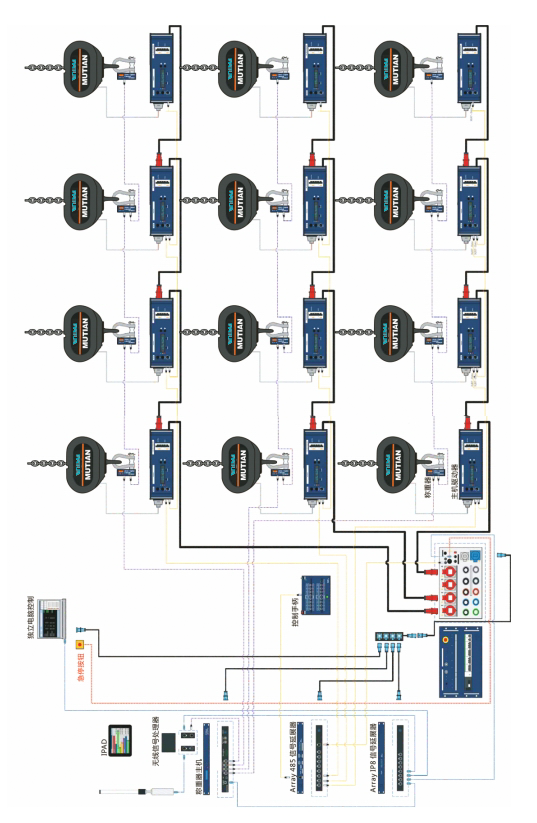
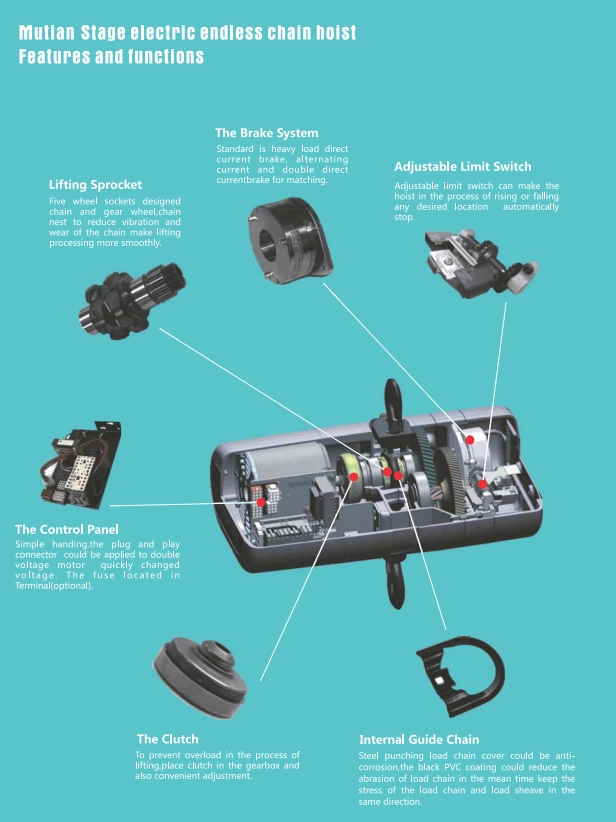
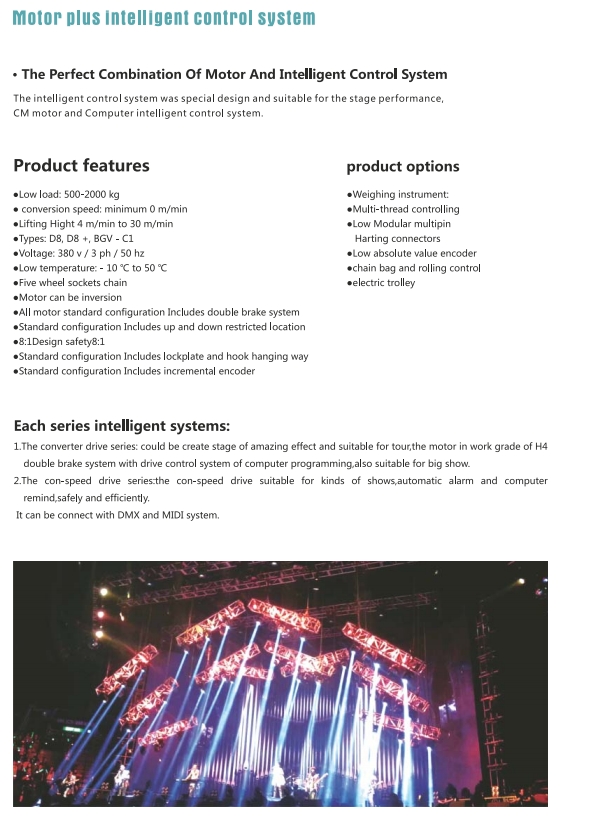
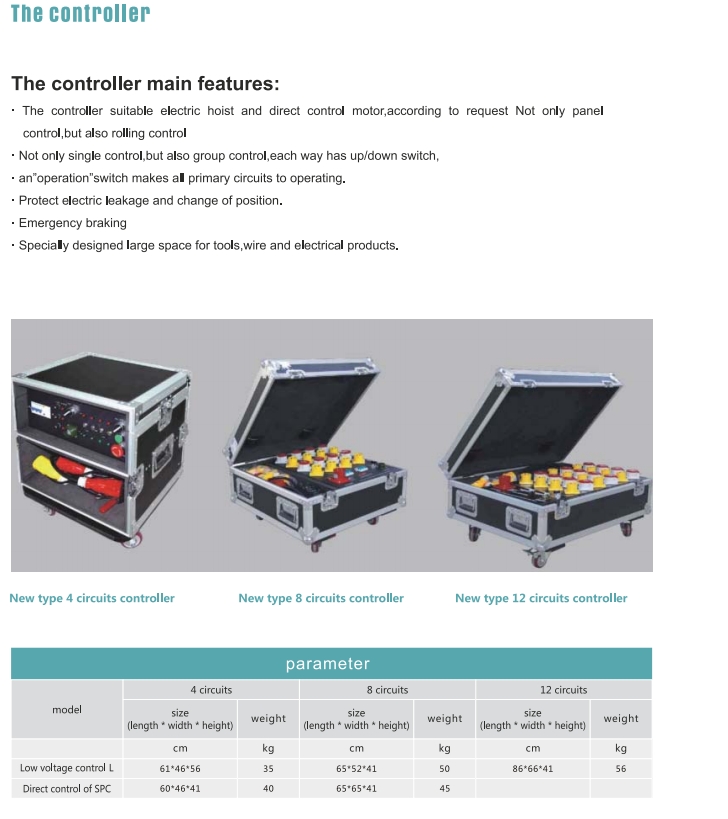
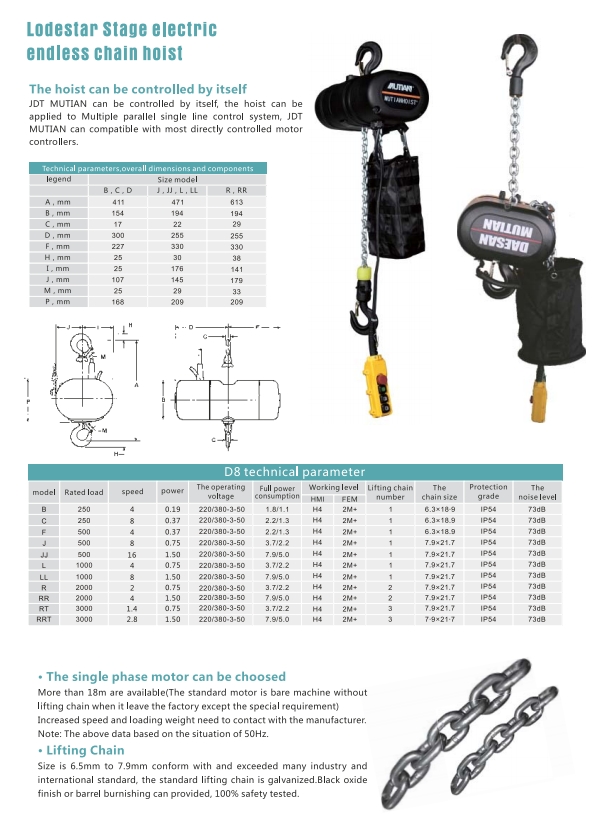
X